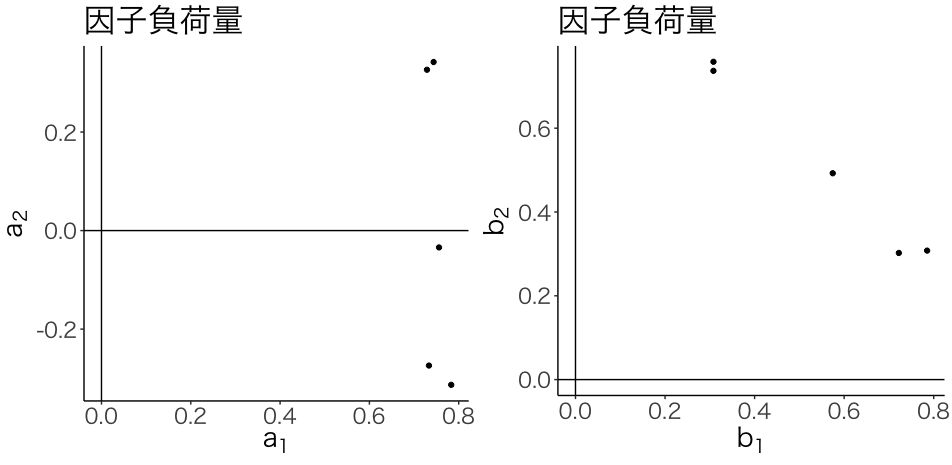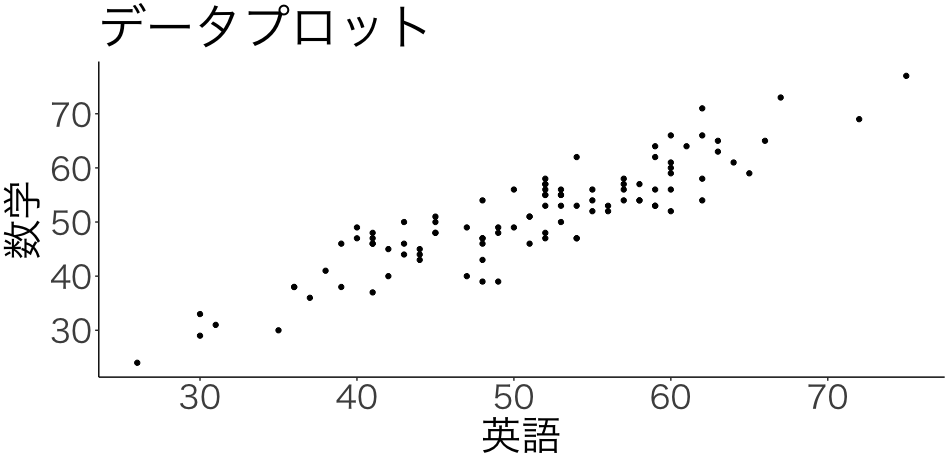
【Rで多変量解析#11】探索的因子分析
記事の目的
主成分分析をRを使用して実装していきます。データの作成から実装するので、コピペで再現することが可能です。
目次
1 ライブラリ
library(dplyr) library(ggplot2) library(gridExtra) library(psych)
2 1因子の場合
2.1 データ
set.seed(1) f <- rnorm(100, 50, 10) 英語 <- rnorm(100, f, 3) %>% round() 数学 <- rnorm(100, f, 3) %>% round() data <- data.frame(英語,数学) data %>% head()
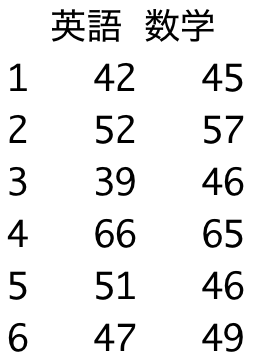
2.2 データの可視化
data %>% ggplot() + geom_point(aes(英語, 数学))+ theme_classic(base_family = "HiraKakuPro-W3")+ theme(text=element_text(size=30)) + labs(title="データプロット")
2.3 分析結果
model <- fa(r=data, nfactors=1, fm="ml") par(family= "HiraKakuProN-W3") fa.diagram(model)
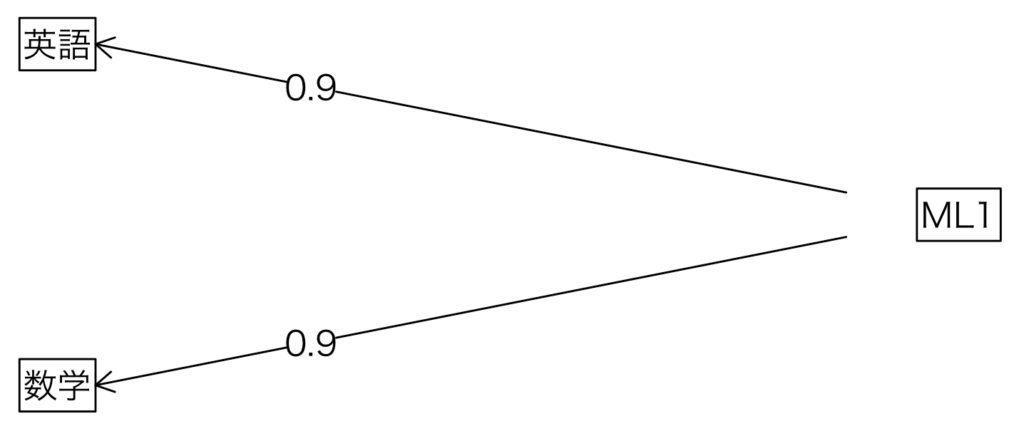
3 2因子の場合
3.1 データ
set.seed(10) 理系 <- rnorm(100, 50, 10) 文系 <- rnorm(100, 50, 10) 英語 <- rnorm(100, 0.7*文系+0.3*理系, 5) %>% round() 数学 <- rnorm(100, 0.3*文系+0.7*理系, 5) %>% round() 国語 <- rnorm(100, 0.7*文系+0.3*理系, 5) %>% round() 理科 <- rnorm(100, 0.3*文系+0.7*理系, 5) %>% round() 社会 <- rnorm(100, 0.7*文系+0.3*理系, 5) %>% round() data <- data.frame(英語, 数学, 国語, 理科, 社会) data <- apply(data, 2, scale) data %>% head()

3.2 分析結果
model1 <- fa(data, nfactors = 2, rotate = "none", fm="ml") model2 <- fa(data, nfactors = 2, rotate = "varimax", fm="ml") model1 ; model2
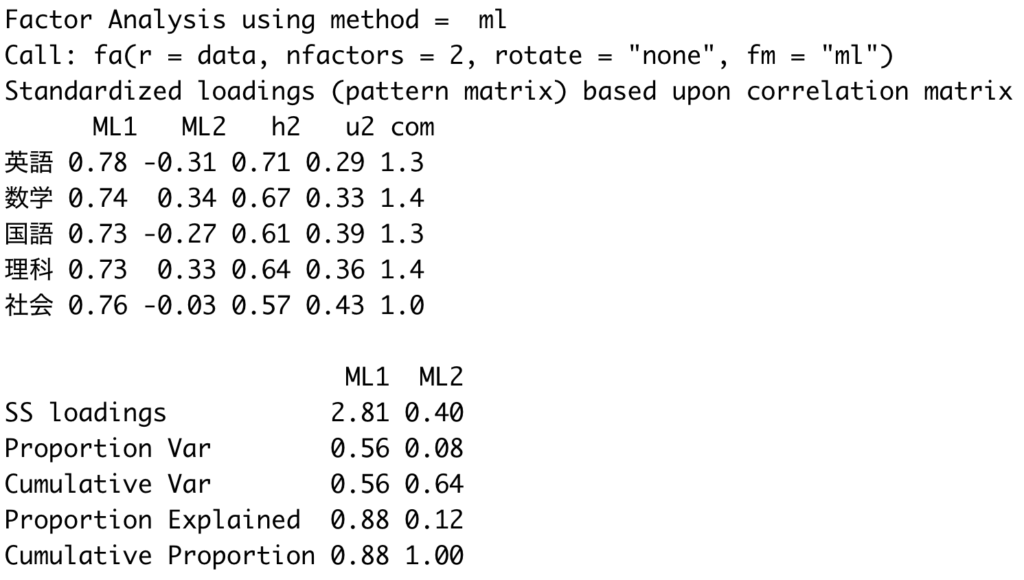
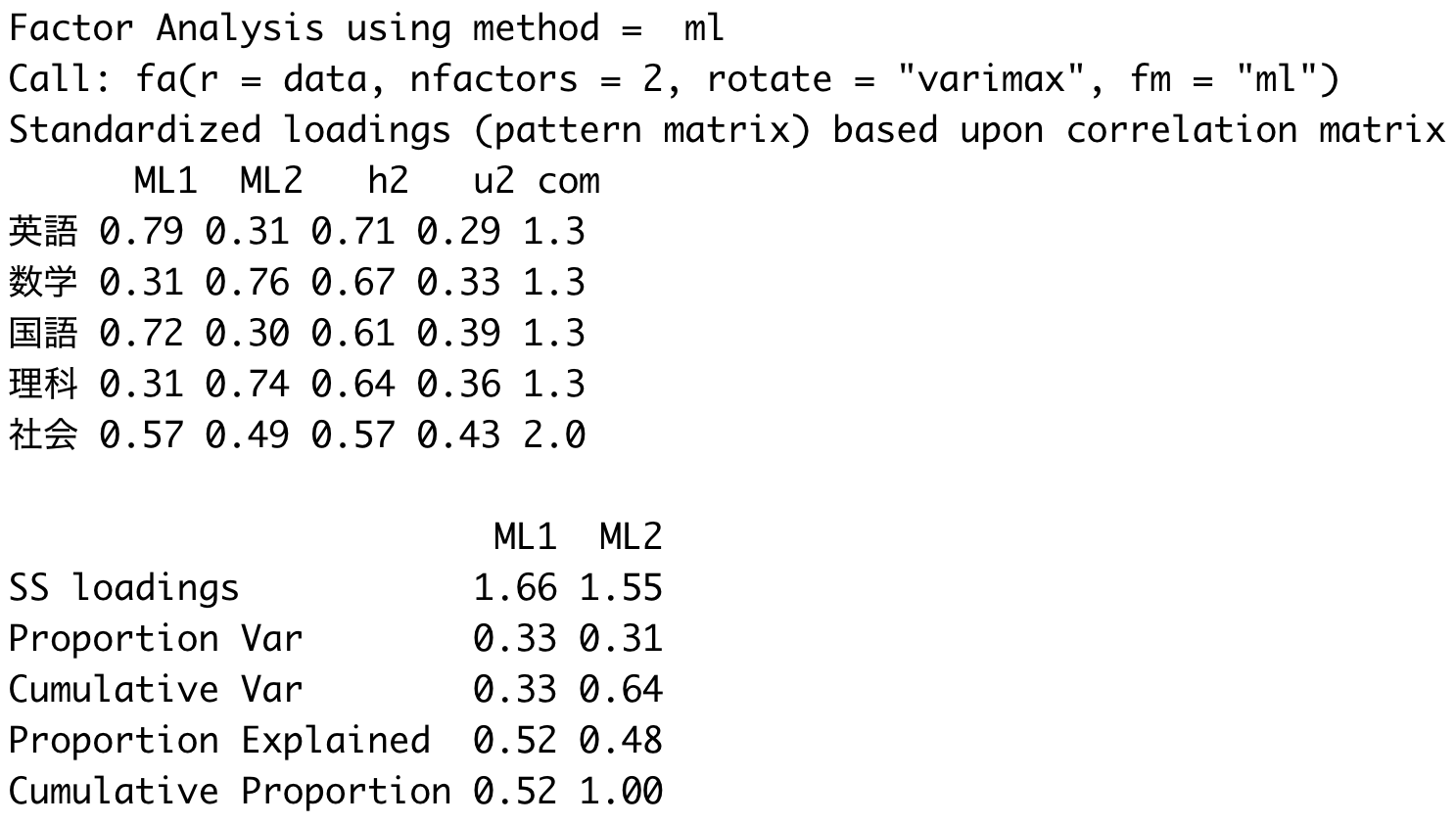
3.3 結果の可視化
fa.diagram(model1) fa.diagram(model2)
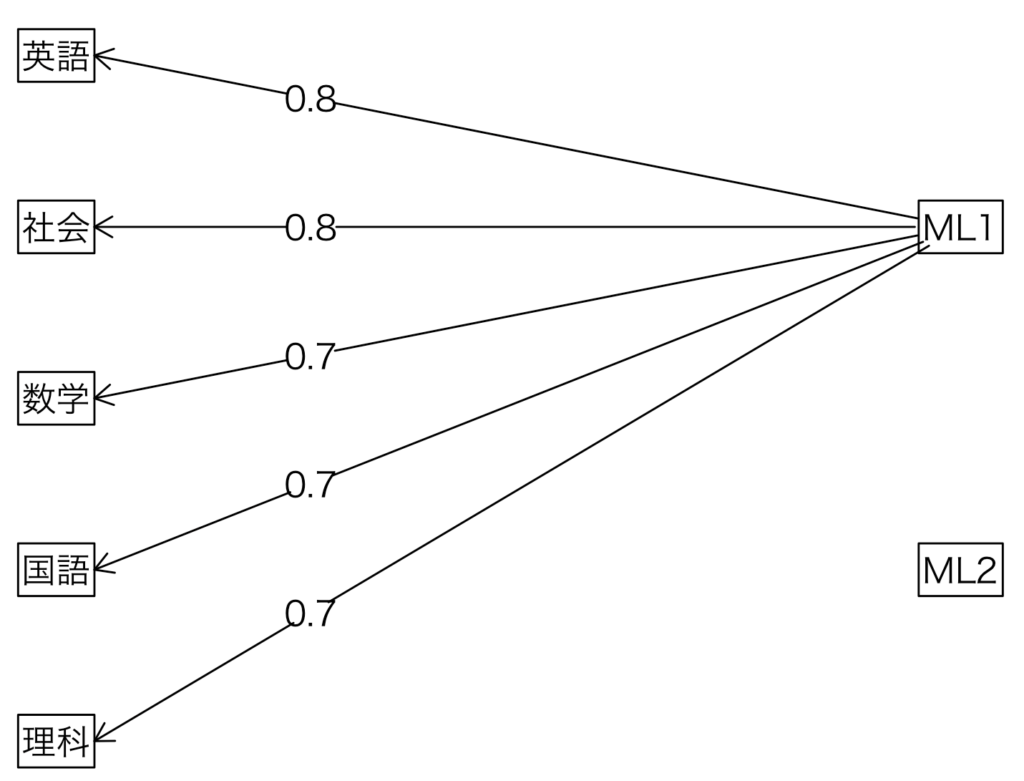
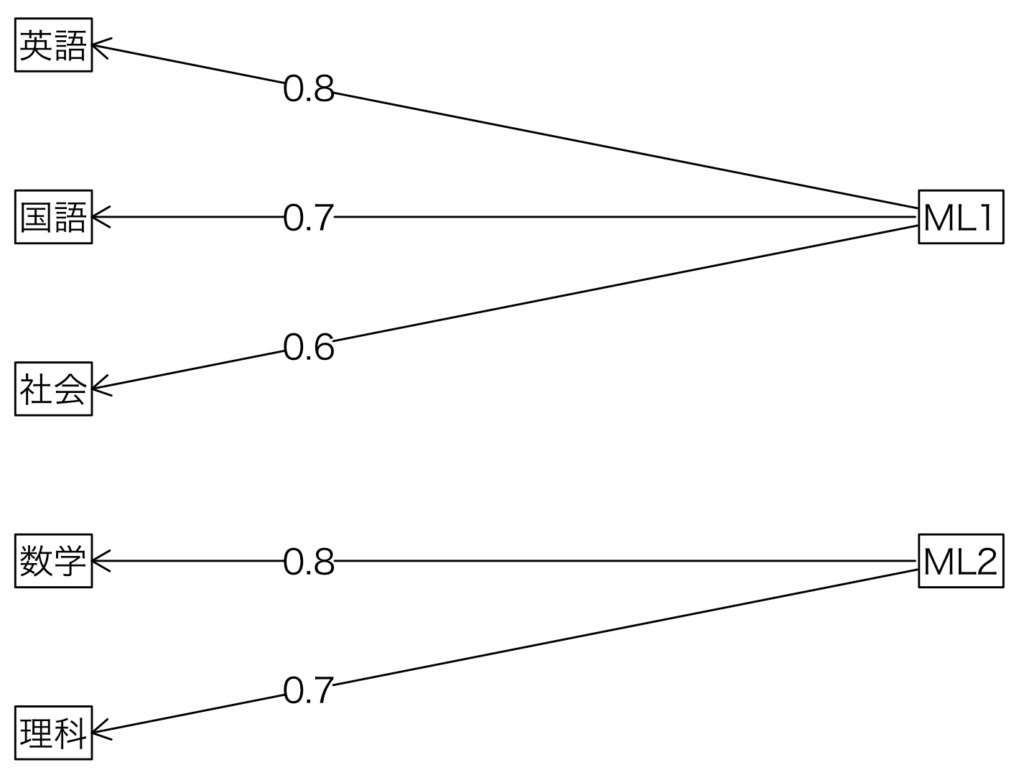
p1 <- ggplot() + geom_point(aes(model1$loadings[,1],model1$loadings[,2]))+ theme_classic(base_family = "HiraKakuPro-W3")+ theme(text=element_text(size=20)) + labs(title="因子負荷量", x=expression(a[1]), y=expression(a[2]))+ geom_hline(yintercept = 0)+ geom_vline(xintercept = 0) p2 <- ggplot() + geom_point(aes(model2$loadings[,1],model2$loadings[,2]))+ theme_classic(base_family = "HiraKakuPro-W3")+ theme(text=element_text(size=20)) + labs(title="因子負荷量", x=expression(b[1]), y=expression(b[2]))+ geom_hline(yintercept = 0)+ geom_vline(xintercept = 0) grid.arrange(p1, p2, nrow=1)
